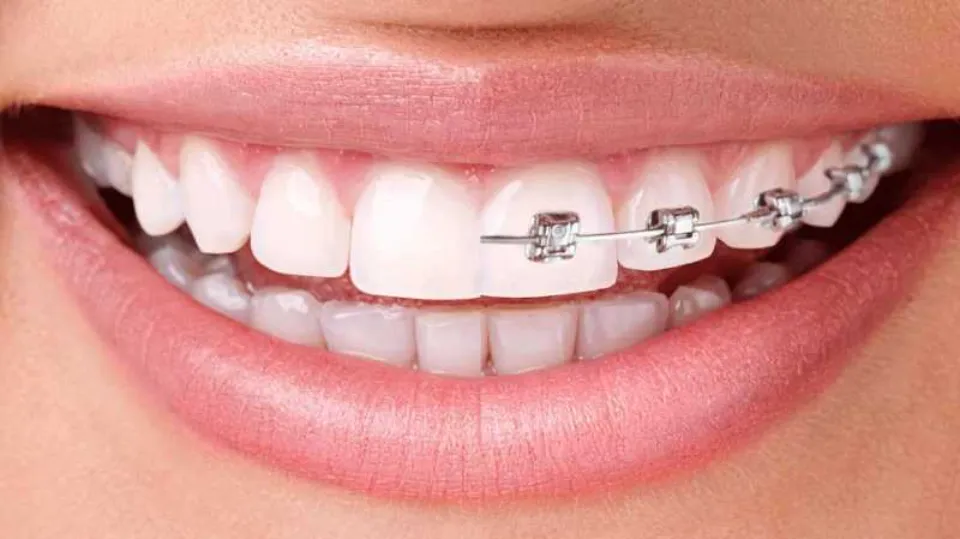
Invisalign vs. Traditional Braces – Which One Is Cheaper?
When choosing between traditional braces and Invisalign for their orthodontic treatment, many people struggle.
Due to the lab costs associated with producing the aligners, Invisalign is typically more expensive than getting braces.
As they both differ in price, comfort, and appearance, picking one over the other can be challenging. We talked to two orthodontists about the variations between braces and Invisalign to help you choose which option is best for you.
Invisalign Vs. Traditional Braces
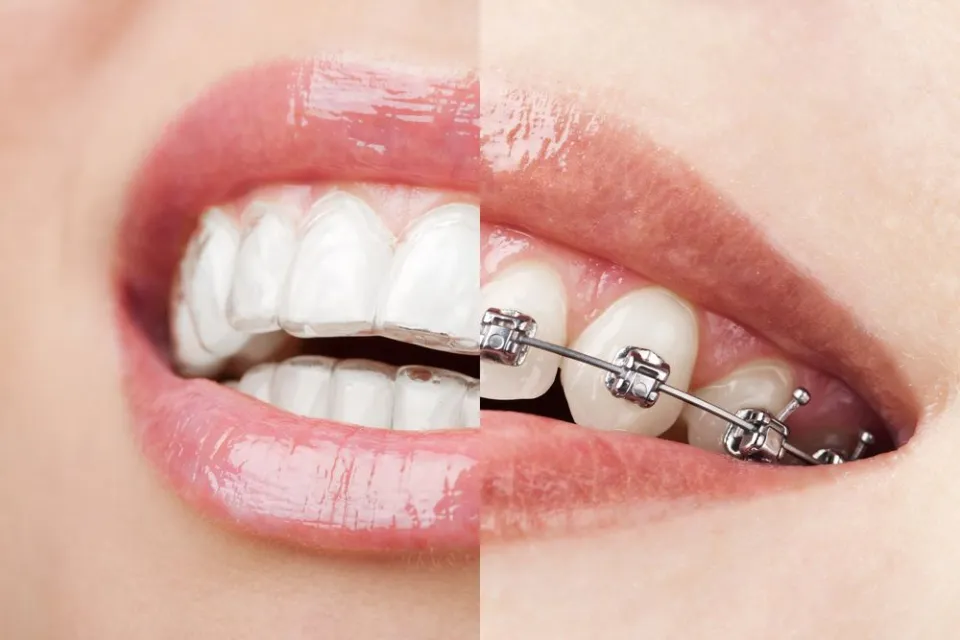
Appearance
We can all agree that Invisalign is the clear winner in this comparison if you want a treatment option that hides the fact that you’re straightening your teeth. Most people won’t be able to tell you’re wearing Invisalign aligners at all because they are made of virtually invisible clear plastic.
Nevertheless, there are still other choices that are neither traditional metal braces nor clear aligners. To match your teeth, clear braces are made of ceramic material that is tooth-colored. Lingual braces are another option. These brackets are a popular choice for adults because they are affixed to the backs of the teeth rather than the fronts.
Read More: How Do Braces Work
Cost
The cost of traditional metal braces is marginally less than that of Invisalign. Even though more insurance companies are beginning to pay for Invisalign, metal braces are still more likely to be covered by insurance to some extent. Metal braces win out in this situation if cost is a factor. We can give you estimates that factor in the amount your dental insurance will cover in order to determine the precise cost difference.
If you have your heart set on Invisalign but your dental insurance does not cover it, you can pay for it with money from your FSA or HSA account. Any costs that are not covered by insurance can be financed with financing at 0%.
Treatment Time
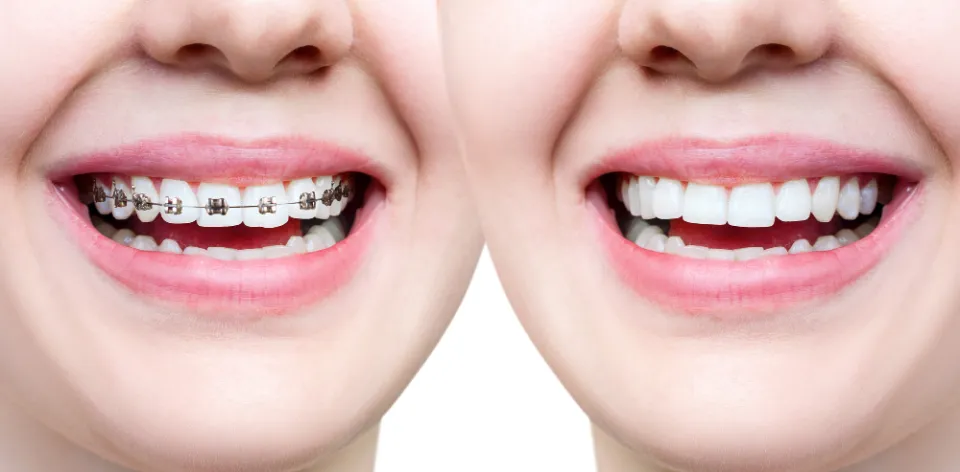
However, this is only true if patients wear their aligners for the recommended amount of time each day. Invisalign technology has advanced recently to make treatment time compared to metal braces. Your treatment time will increase if you frequently leave your aligners out or only take them out for special occasions. Due to the fact that metal braces are always worn and are worn continuously throughout treatment, treatment times are typically shorter with metal braces.
Read More: Do Braces Cause Canker Sores
However, Invisalign can also help you save time in other ways. Your time at our office will be reduced because you won’t need to visit us every four weeks to have your wires tightened; instead, you can change to the next set of aligners at home. To monitor your progress, you’ll still need to make appointments for visits about every six weeks, but they’re quick and painless, to put it mildly. Additionally, since there aren’t any brackets to break or wires to bend, you’ll never have to reschedule your plans to allow for an urgent office visit for repairs.
Results
This is a tie because both Invisalign and conventional metal braces are fantastic ways to straighten teeth and fix bites and deliver great results.
However, for some severe orthodontic problems, traditional metal braces are a better option. We understand that may come as a disappointment if you were hoping to get Invisalign, but it is our responsibility to provide you with the best care so you can have a gorgeous, healthy smile for the rest of your life.
Is Invisalign Faster Than Braces?
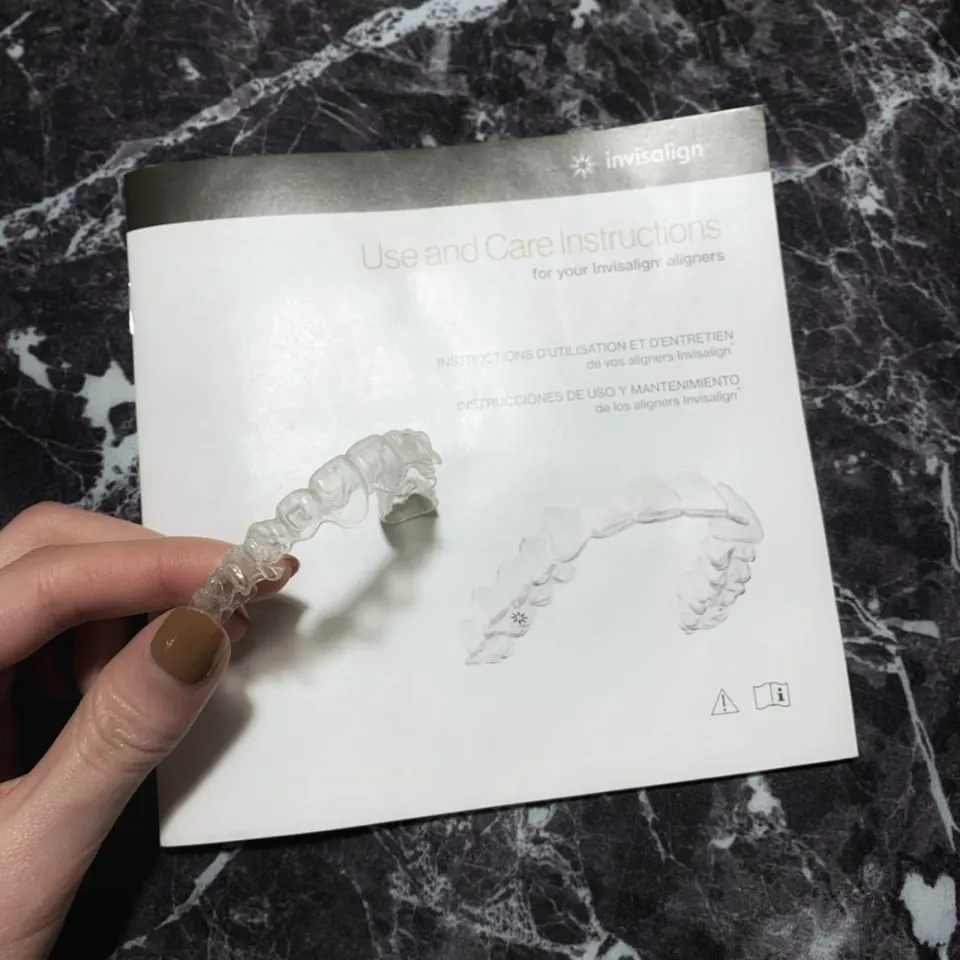
Simply put, the response is yes. Invisalign treatments typically last 12 months, whereas traditional metal braces take 18 to 24 months to complete. The complexity of the treatment plan, however, largely dictates how long it will take to produce the desired results.
Wearing Invisalign for about 20 hours per day is recommended for best results. Over a two-week period, the aligner moves the teeth.25 to.33 millimeters. A new aligner is created after the old one is changed; it will aid in tooth movement.
For six to eighteen months, you will typically wear your invisible aligner. The length of time depends on your unique requirements.
When you get braces, metal brackets are attached to your teeth within an hour or two and are bonded to them. After getting braces, they will stay in your mouth for the following two years permanently.
Factors to Consider When Looking at Invisalign and Braces Prices
Condition Complexity/Severity
Depending on the severity of malocclusion, orthodontists advise using a variety of treatment strategies. For example, to straighten your teeth, you can use lingual braces, ceramic braces, metal braces, or aligners. Each appliance is made with a unique combination of materials and technical expertise. Smart technology must be used to customize braces or aligners. Depending on the chosen method, the cost of treatment will depend on the degree of customization required.
Treatment Duration
The average length of orthodontic treatment is between six and two years. The duration of treatment varies depending on the severity of malocclusion. It takes longer to treat a disease that is more complicated. Treatment plans for orthodontics are created based on the anticipated time frame. When using transparent aligners, a longer treatment period may be necessary (depending on how complicated the problem is), which would raise the cost of customization and production. As a result, treatment-related costs as a whole will rise.
Plans and Packages
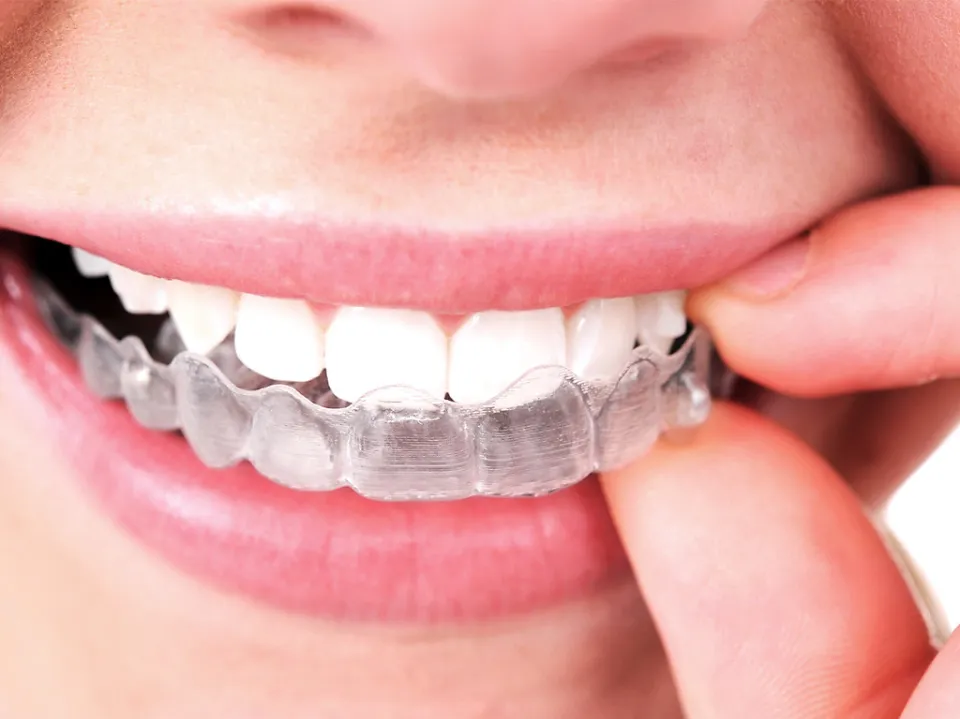
Most orthodontic specialists and service providers offer all-inclusive plans with no additional costs. At the start of the course of treatment, the doctor explains this. The packages include all consultations, evaluations of problems, treatment plans, and follow-ups. Some suppliers also accept installment payments rather than a single large payment. Choose a course of treatment that fits your budget and makes you feel content on the inside.
Insurance Coverage
The overall cost of your dental care is significantly affected by whether your dental care is covered by insurance. If you have dental insurance that covers orthodontic treatment, having a beautiful smile does not have to break the bank. Before starting treatment, you should find out more about your insurance coverage from your financial coordinator or from your provider.
Conclusion: Are Braces Or Invisalign Worth It?
Invisalign and braces appear to be expensive up front, but your insurance company may cover all or some of the costs. Additionally, you can use money from your flexible savings account (FSA) or health savings account (HSA) to help pay for the course of treatment. To learn about your possible out-of-pocket expenses, check with your insurer.
Whichever option you select, you will ultimately have straighter teeth. Teeth alignment is more important than just aesthetics. Because brushing and flossing are simpler when your teeth are properly aligned, less harmful bacteria and plaque buildup occur. You’ll have better teeth and gums in addition to a beautiful smile. You’ll discover that braces or Invisalign will improve your ability to chew and speak comfortably if your bite issues are causing jaw pain. Invisalign or braces are a worthwhile investment in your dental health because of all those factors.
FAQs
Are Braces Still Better Than Invisalign?
For most children and teenagers as well as those with severe crookedness, braces are preferable. For adults who want a nearly invisible and more comfortable method of teeth straightening, Invisalign and other brands of clear aligners work best, provided that the teeth aren’t too misaligned.
Are Normal Braces More Expensive Than Invisalign?
Metal braces typically cost between $1,800 and $5,500, while the cost of Invisalign ranges from $3,000 to $5,000. On average, the two treatments are comparable in price.
Is Invisalign More Painful Than Braces?
Although Invisalign is frequently referred to as painless, wearing metal braces is still more painful.





Average Rating